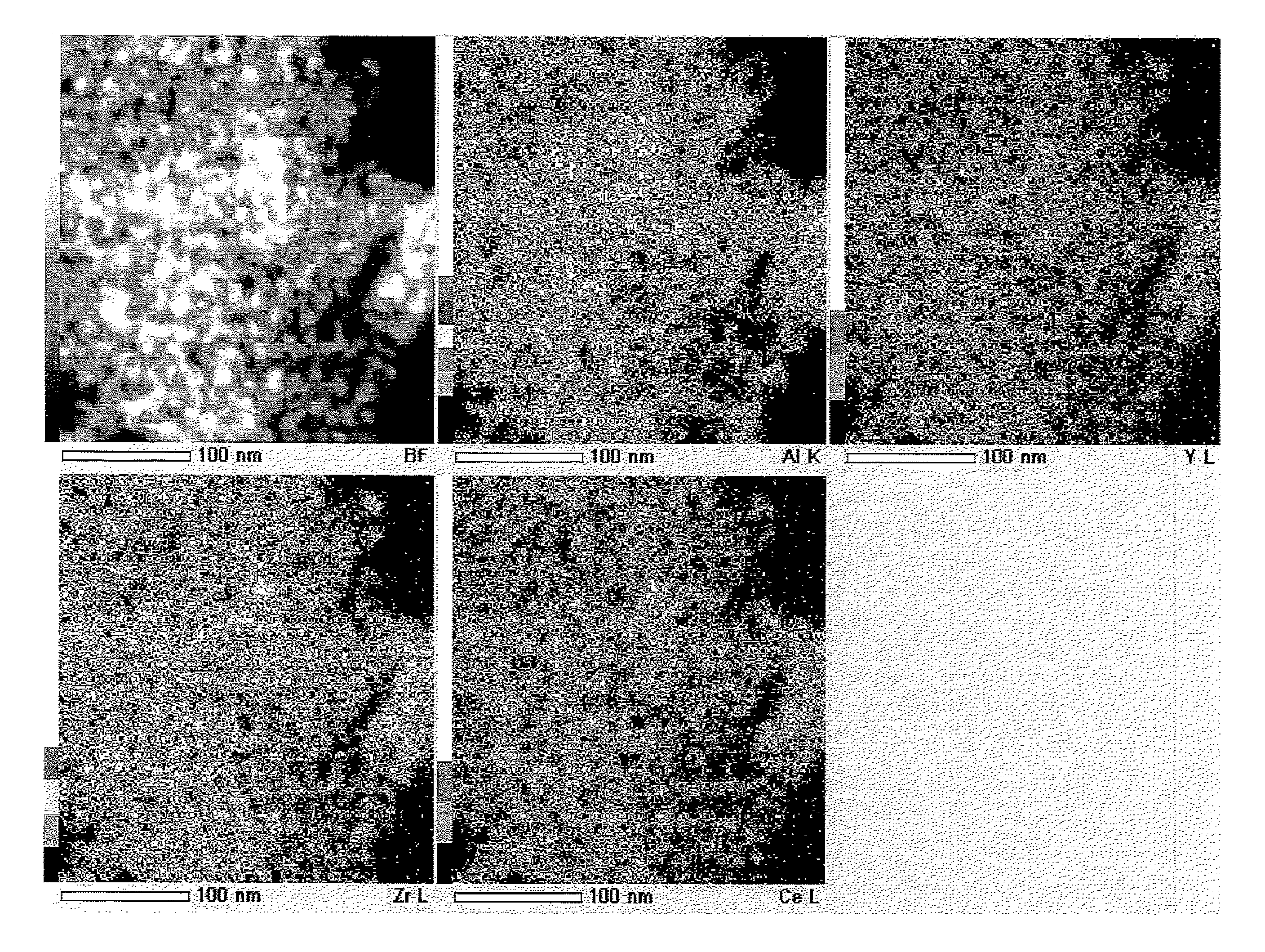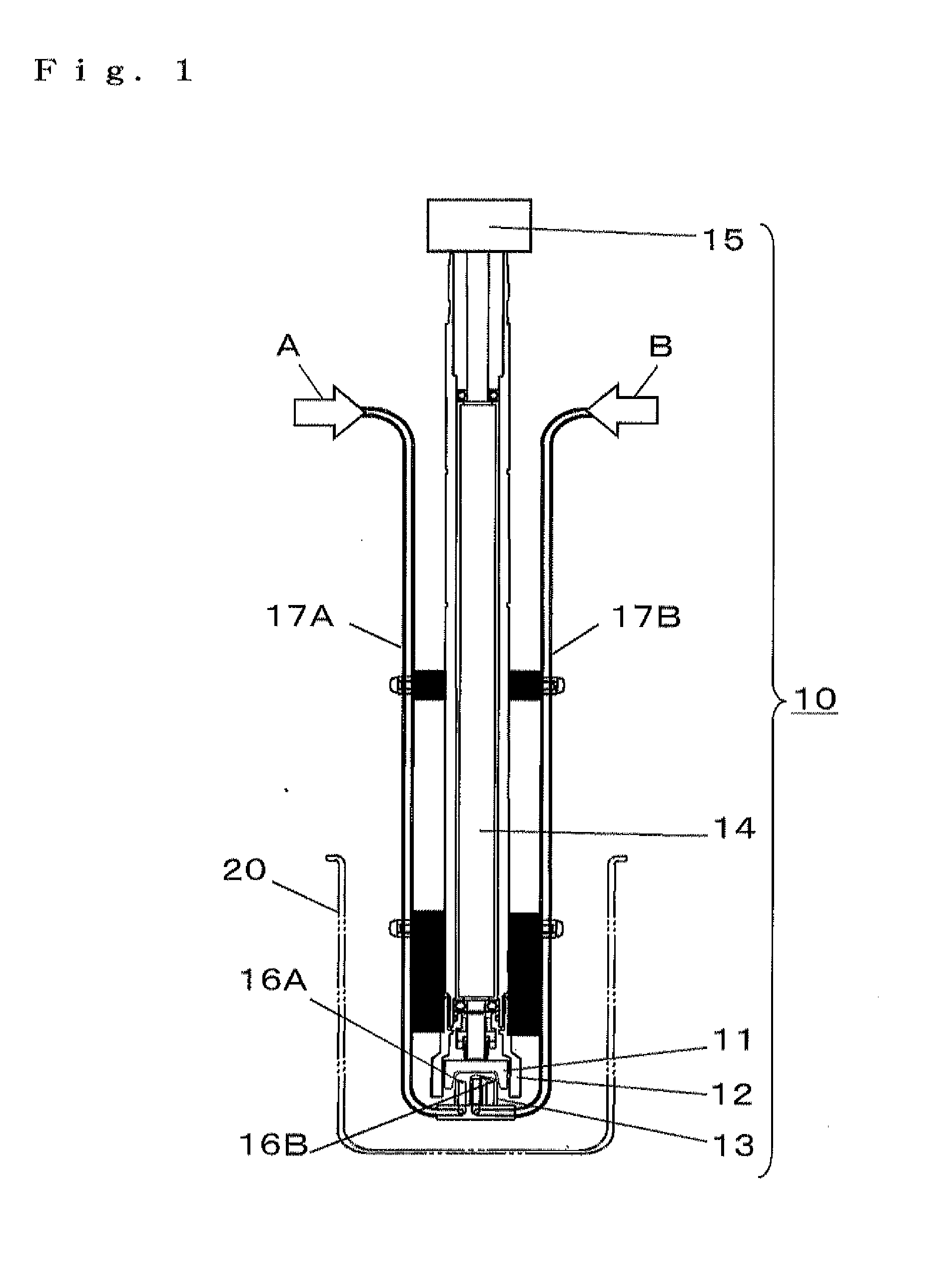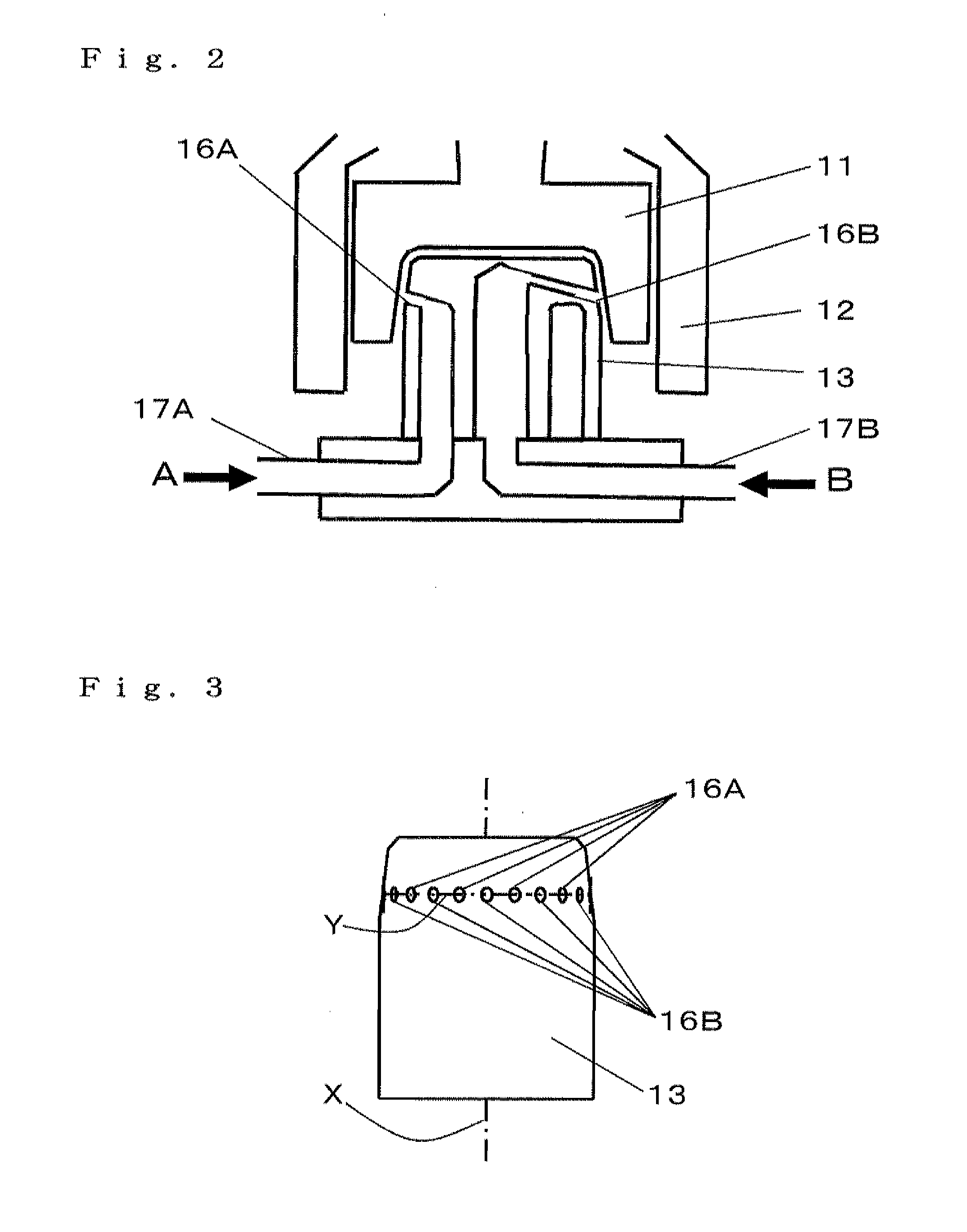Porous composite metal oxide, catalyst using the same, and methods for producing the porous composite metal oxide and the catalyst
metal oxide technology, applied in the direction of catalyst activation/preparation, metal/metal-oxide/metal-hydroxide catalysts, physical/chemical process catalysts, etc., can solve the problem of limited improvement in the uniformity of metal oxide, limitation of heat resistance improvement, and the catalyst obtained by using such a composite metal oxide as a support is not necessarily satisfactory. problem, to achieve the effect of high catalytic activity, high degree of dispersion, and excellent heat resistan
- Summary
- Abstract
- Description
- Claims
- Application Information
AI Technical Summary
Benefits of technology
Problems solved by technology
Method used
Image
Examples
example 1
PEI, Mixing of Al2O3 Nanocolloid and CZY Nanocolloid, Acetates, MS-ACZY-62.5
[0131]
[0132]First, a raw material solution A-1, a raw material solution B-1, a raw material solution A-2, and a raw material solution B-2 were prepared as follows. Note that a polyethyleneimine used is represented by the following formula (1).
Raw material solution A-1: prepared by dissolving 9.38 g of aluminum nitrate in 307 g of ion-exchanged water.
Raw material solution B-1: prepared by dissolving 8.23 g of ammonium nitrate, 62.5 g of a polyethyleneimine having a molecular weight of 10000, and 115 g of nitric acid in 320 g of ion-exchanged water.
Raw material solution A-2: prepared by dissolving 12.7 g of cerium (III) acetate, 12.8 g of zirconium oxyacetate, and 1.7 g of yttrium acetate tetrahydrate in 500 g of ion-exchanged water. These added amount correspond to a cation concentration of 0.1 mol / L, where Ce:Zr:Y=38:57:5 (molar ratio).
Raw material solution B-2: prepared by dissolving 23.2 g of ammonium acet...
example 2
PEI, Mixing of Al2O3 Nanocolloid and CZY Nanocolloid, Nitrates, MN-ACZY-62.5
[0154]First, a raw material solution A-2, and a raw material solution B-2 were prepared as follows.
Raw material solution A-2: prepared by dissolving 10.9 g of diammonium cerium nitrate, 7.6 g of zirconyl oxynitrate, and 1.0 g of yttrium nitrate in 500 g of ion-exchanged water. Raw material solution B-2: prepared by dissolving 15.0 g of ammonium nitrate, 62.5 g of a polyethyleneimine having a molecular weight of 10000, and 115 g of nitric acid in 320 g of ion-exchanged water.
[0155]A first colloidal solution (pH 1.0) and a second colloidal solution (pH 1.0) were prepared in a similar manner to that in Example 1, except that the above-described raw material solutions were each used as the raw material solution A-2 and the raw material solution B-2.
[0156]Subsequently, in-liquid average (aggregate) particle diameters of nano particles of the metal compounds in the colloidal solutions were measured in a similar ma...
example 3
PEI, mixing of AZL Nanocolloid, Acetates, MS-AZL-62.5
[0160]First, a raw material solution A-1, a raw material solution B-1, a raw material solution A-2, and a raw material solution B-2 were prepared as follows.
Raw material solution A-1: prepared by dissolving 9.38 g of aluminum nitrate in 500 g of ion-exchanged water.
Raw material solution B-1: prepared by dissolving 8.23 g of ammonium nitrate, 62.5 g of a polyethyleneimine having a molecular weight of 10000, and 115 g of nitric acid in 320 g of ion-exchanged water.
Raw material solution A-2: prepared by dissolving 22.5 g of zirconium oxyacetate and 1.7 g of lanthanum acetate 1.5 hydrate in 500 g of ion-exchanged water.
Raw material solution B-2: prepared by dissolving 21.6 g of ammonium acetate, 62.5 g of a polyethyleneimine having a molecular weight of 10000, and 130 g of acetic acid in 308 g of ion-exchanged water.
[0161]A first colloidal solution (pH 3.8) and a second colloidal solution (pH 4.9) were prepared in a similar manner to ...
PUM
| Property | Measurement | Unit |
|---|---|---|
| Percent by mass | aaaaa | aaaaa |
| Nanoscale particle size | aaaaa | aaaaa |
| Nanoscale particle size | aaaaa | aaaaa |
Abstract
Description
Claims
Application Information
 Login to View More
Login to View More - R&D
- Intellectual Property
- Life Sciences
- Materials
- Tech Scout
- Unparalleled Data Quality
- Higher Quality Content
- 60% Fewer Hallucinations
Browse by: Latest US Patents, China's latest patents, Technical Efficacy Thesaurus, Application Domain, Technology Topic, Popular Technical Reports.
© 2025 PatSnap. All rights reserved.Legal|Privacy policy|Modern Slavery Act Transparency Statement|Sitemap|About US| Contact US: help@patsnap.com



